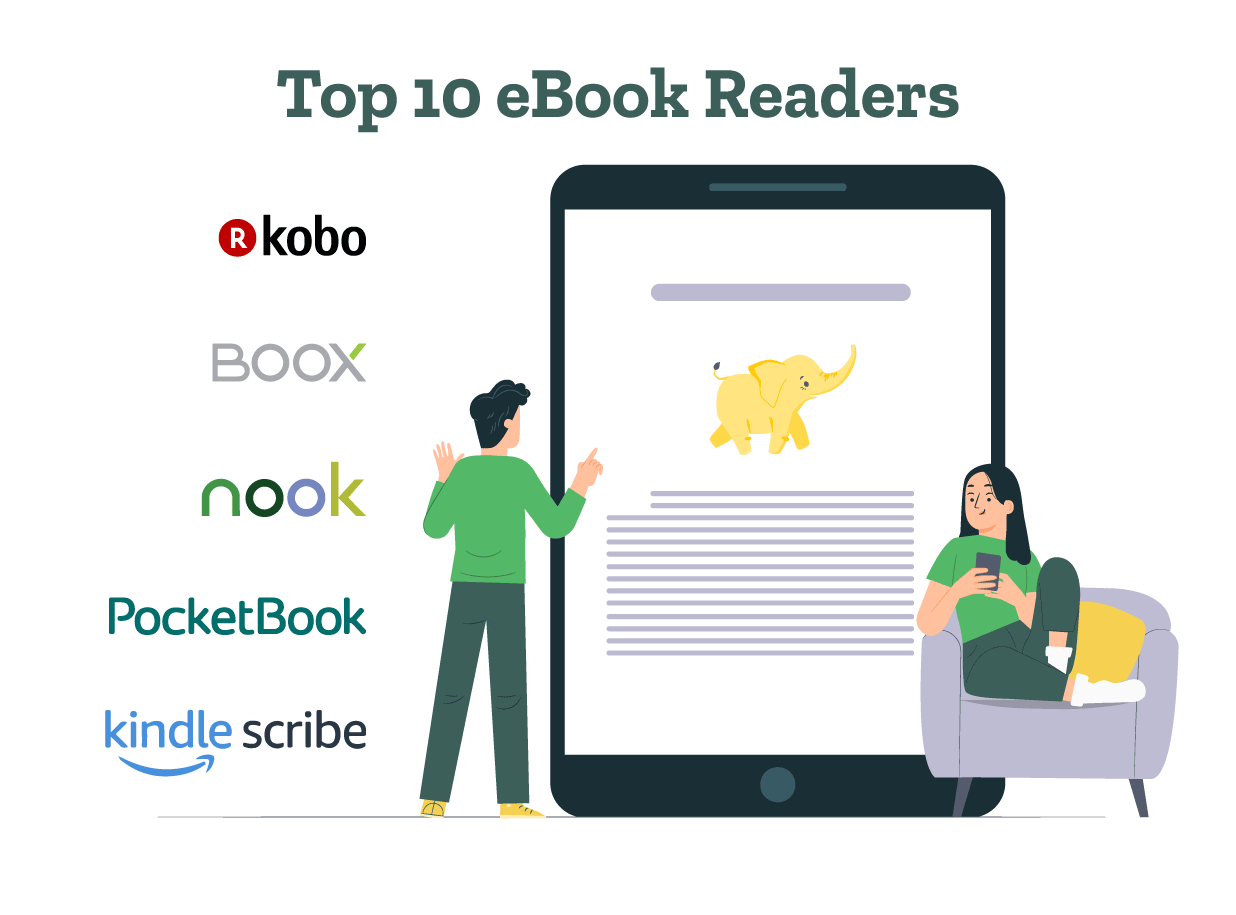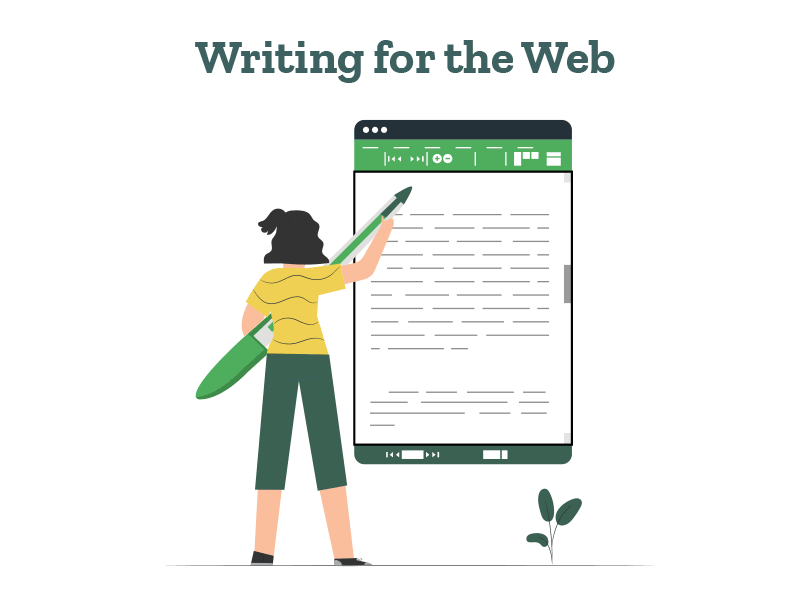- A List of Writing Contests in 2022 | Exciting Prizes!
- Em Dash vs. En Dash vs. Hyphen: When to Use Which
- Book Proofreading 101: The Beginner’s Guide
- Screenplay Editing: Importance, Cost, & Self-Editing Tips
- Screenplay Proofreading: Importance, Process, & Cost
- Script Proofreading: Rates, Process, & Proofreading Tips
- Manuscript Proofreading | Definition, Process & Standard Rates
- Tips to Write Better if English Is Your Second Language
- Novel Proofreading | Definition, Significance & Standard Rates
- Top 10 Must-Try Writing Prompt Generators in 2024
- 100+ Creative Writing Prompts for Masterful Storytelling
- Top 10 eBook Creator Tools in 2024: Free & Paid
- 50 Timeless and Unforgettable Book Covers of All Time
- What Is Flash Fiction? Definition, Examples & Types
- 80 Enchanting Christmas Writing Prompts for Your Next Story
- Your Guide to the Best eBook Readers in 2024
- Top 10 Book Review Clubs of 2025 to Share Literary Insights
- 2024’s Top 10 Self-Help Books for Better Living
- Writing Contests 2023: Cash Prizes, Free Entries, & More!
- What Is a Book Teaser and How to Write It: Tips and Examples
- Audiobook vs. EBook vs. Paperback in 2024: (Pros & Cons)
- How to Get a Literary Agent in 2024: The Complete Guide
- Alpha Readers: Where to Find Them and Alpha vs. Beta Readers
- Author Branding 101: How to Build a Powerful Author Brand
- A Guide on How to Write a Book Synopsis: Steps and Examples
- How to Write a Book Review (Meaning, Tips & Examples)
- 50 Best Literary Agents in the USA for Authors in 2024
- Building an Author Website: The Ultimate Guide with Examples
- Top 10 Paraphrasing Tools for All (Free & Paid)
- Top 10 Book Editing Software in 2024 (Free & Paid)
- What Are Large Language Models and How They Work: Explained!
- Top 10 Hardcover Book Printing Services [Best of 2024]
- 2024’s Top 10 Setting Generators to Create Unique Settings
- Different Types of Characters in Stories That Steal the Show
- Top 10 Screenplay & Scriptwriting Software (Free & Paid)
- 10 Best AI Text Generators of 2024: Pros, Cons, and Prices
- Top 10 Must-Try Character Name Generators in 2024
- 10 Best AI Text Summarizers in 2024 (Free & Paid)
- 2024’s 10 Best Punctuation Checkers for Error-Free Text
- 11 Best Story Structures for Writers (+ Examples!)
- How to Write a Book with AI in 2024 (Free & Paid Tools)
- Writing Contests 2024: Cash Prizes & Free Entries!
- Patchwork Plagiarism: Definition, Types, & Examples
- Simple Resume Formats for Maximum Impact With Samples
- What Is a Complement in a Sentence? (Meaning, Types & Examples)
- What are Clauses? Definition, Meaning, Types, and Examples
- Persuasive Writing Guide: Techniques & Examples
- How to Paraphrase a Text (Examples + 10 Strategies!)
- A Simple Proofreading Checklist to Catch Every Mistake
- Top 10 AI Resume Checkers for Job Seekers (Free & Paid)
- 20 Best Comic Book Covers of All Time!
- How to Edit a Book: A Practical Guide with 7 Easy Steps
- How to Write an Autobiography (7 Amazing Strategies!)
- How to Publish a Comic Book: Nine Steps & Publishing Costs
- Passive and Active Voice (Meaning, Examples & Uses)
- How to Publish a Short Story & Best Publishing Platforms
- What Is Expository Writing? Types, Examples, & 10 Tips
- 10 Best Introduction Generators (Includes Free AI Tools!)
- Creative Writing: A Beginner’s Guide to Get Started
- How to Sell Books Online (Steps, Best Platforms & Tools)
- Top 10 Book Promotion Services for Authors (2025)
- 15 Different Types of Poems: Examples & Insight into Poetic Styles
- 10 Best Book Writing Apps for Writers 2025: Free & Paid!
- Top 10 AI Humanizers of 2025 [Free & Paid Tools]
- How to Write a Poem: Step-by-Step Guide to Writing Poetry
- 100+ Amazing Short Story Ideas to Craft Unforgettable Stories
- The Top 10 Literary Devices: Definitions & Examples
- Top 10 AI Translators for High-Quality Translation in 2025
- Top 10 AI Tools for Research in 2025 (Fast & Efficient!)
- 50 Best Essay Prompts for College Students in 2025
- Top 10 Book Distribution Services for Authors in 2025
- Best 101 Greatest Fictional Characters of All Time
- Top 10 Book Title Generators of 2025
- Best Fonts and Sizes for Books: A Complete Guide
- What Is an Adjective? Definition, Usage & Examples
- How to Track Changes in Google Docs: A 7-Step Guide
- Best Book Review Sites of 2025: Top 10 Picks
- Parts of a Book: A Practical, Easy-to-Understand Guide
- What Is an Anthology? Meaning, Types, & Anthology Examples
- How to Write a Book Report | Steps, Examples & Free Template
- 10 Best Plot Generators for Engaging Storytelling in 2025
- 30 Powerful Poems About Life to Inspire and Uplift You
- What Is a Poem? Poetry Definition, Elements, & Examples
- Metonymy: Definition, Examples, and How to Use It In Writing
- How to Write a CV with AI in 9 Steps (+ AI CV Builders)
- What Is an Adverb? Definition, Types, & Practical Examples
- How to Create the Perfect Book Trailer for Free
- Top 10 Book Publishing Companies in 2025
- 14 Punctuation Marks: A Guide on How to Use with Examples!
- Translation Services: Top 10 Professional Translators (2025)
- 10 Best Free Online Grammar Checkers: Features and Ratings
- 30 Popular Children’s Books Teachers Recommend in 2025
- 10 Best Photobook Makers of 2025 We Tested This Year
- Top 10 Book Marketing Services of 2025: Features and Costs
- Top 10 Book Printing Services for Authors in 2025
- 10 Best AI Detector Tools in 2025
- Audiobook Marketing Guide: Best Strategies, Tools & Ideas
- 10 Best AI Writing Assistants of 2025 (Features + Pricing)
- How to Write a Book Press Release that Grabs Attention
- 15 Powerful Writing Techniques for Authors in 2025
- Generative AI: Types, Impact, Advantages, Disadvantages
- Top 101 Bone-Chilling Horror Writing Prompts
- 25 Figures of Speech Simplified: Definitions and Examples
- Top 10 AI Rewriters for Perfect Text in 2025 (Free & Paid)
- Best EBook Cover Design Services of 2025 for Authors
- Writing Contests 2025: Cash Prizes, Free Entries, and More!
- Top 10 Book Writing Software, Websites, and Tools in 2025
- National Novel Writing Month (NaNoWriMo)
- Best Horror Books of All Time (Must-Read List)
- Best Book Trailer Services
- What is a Book Copyright Page?
- Final Checklist: Is My Article Ready for Submitting to Journals?
- 8 Pre-Publishing Steps to Self-Publish Your Book
- 7 Essential Elements of a Book Cover Design
- How to Copyright Your Book in the US, UK, & India
- Beta Readers: Why You Should Know About Them in 2024
- How to Publish a Book in 2024: Essential Tips for Beginners
- Book Cover Design Basics: Tips & Best Book Cover Ideas
- Why and How to Use an Author Pen Name: Guide for Authors
- How to Format a Book in 2025: 7 Tips for Book Formatting
- What is Manuscript Critique? Benefits, Process, & Cost
- 10 Best Ghostwriting Services for Authors in 2025
- ISBN Guide 2025: What Is an ISBN and How to Get an ISBN
- Best Manuscript Editing Services of 2025
- How to Hire a Book Editor in 5 Practical Steps
- Self-Publishing Options for Writers
- How to Promote Your Book Using a Goodreads Author Page
- 7 Essential Elements of a Book Cover Design
- What Makes Typesetting a Pre-Publishing Essential for Every Author?
- 4 Online Publishing Platforms To Boost Your Readership
- Typesetting: An Introduction
- Quick Guide to Novel Editing (with a Self-Editing Checklist)
- Self-Publishing vs. Traditional Publishing: 2024 Guide
- How to Publish a Book in 2024: Essential Tips for Beginners
- How to Publish a Book on Amazon: 8 Easy Steps [2024 Update]
- What are Print-on-Demand Books? Cost and Process in 2024
- What Are the Standard Book Sizes for Publishing Your Book?
- How to Market Your Book on Amazon to Maximize Sales in 2024
- Top 10 Hardcover Book Printing Services [Best of 2024]
- How to Find an Editor for Your Book in 8 Steps (+ Costs!)
- What Is Amazon Self-Publishing? Pros, Cons & Key Insights
- Manuscript Editing in 2024: Elevating Your Writing for Success
- Know Everything About How to Make an Audiobook
- A Simple 14-Point Self-Publishing Checklist for Authors
- How to Write an Engaging Author Bio: Tips and Examples
- Book Cover Design Basics: Tips & Best Book Cover Ideas
- How to Publish a Comic Book: Nine Steps & Publishing Costs
- Why and How to Use an Author Pen Name: Guide for Authors
- How to Sell Books Online (Steps, Best Platforms & Tools)
- A Simple Guide to Select the Best Self-Publishing Websites
- 10 Best Book Cover Design Services of 2025: Price & Ratings
- How Much Does It Cost to Self-Publish a Book in 2025?
- Quick Guide to Book Editing [Complete Process & Standard Rates]
- How to Distinguish Between Genuine and Fake Literary Agents
- What is Self-Publishing? Everything You Need to Know
- How to Copyright a Book in 2025 (Costs + Free Template)
- The Best eBook Conversion Services of 2025: Top 10 Picks
- 10 Best Self-Publishing Companies of 2025: Price & Royalties
- 10 Best Photobook Makers of 2025 We Tested This Year
- Book Cover Types: Formats, Bindings & Styles
- ISBN Guide 2025: What Is an ISBN and How to Get an ISBN
- A Beginner’s Guide on How to Self Publish a Book (2025)
- Index in a Book: Definition, Purpose, and How to Use It
- How to Publish a Novel: Easy Step-By-Step Guide
- How to start your own online publishing company?
- 8 Tips To Write Appealing Query Letters
- Self-Publishing vs. Traditional Publishing: 2024 Guide
- How to Publish a Book in 2024: Essential Tips for Beginners
- What are Print-on-Demand Books? Cost and Process in 2024
- How to Write a Query Letter (Examples + Free Template)
- Third-person Point of View: Definition, Types, Examples
- How to Write an Engaging Author Bio: Tips and Examples
- How to Publish a Comic Book: Nine Steps & Publishing Costs
- Top 10 Book Publishing Companies in 2025
- 10 Best Photobook Makers of 2025 We Tested This Year
- Book Cover Types: Formats, Bindings & Styles
- ISBN Guide 2025: What Is an ISBN and How to Get an ISBN
- Index in a Book: Definition, Purpose, and How to Use It
- How to Publish a Novel: Easy Step-By-Step Guide
- How to Create Depth in Characters
- Starting Your Book With a Bang: Ways to Catch Readers’ Attention
- Research for Fiction Writers: A Complete Guide
- Short stories: Do’s and don’ts
- How to Write Dialogue: 7 Rules, 5 Tips & 65 Examples
- What Are Foil and Stock Characters? Easy Examples from Harry Potter
- How To Write Better Letters In Your Novel
- On Being Tense About Tense: What Verb Tense To Write Your Novel In
- How To Create A Stellar Plot Outline
- How to Punctuate Dialogue in Fiction
- On Being Tense about Tense: Present Tense Narratives in Novels
- The Essential Guide to Worldbuilding [from Book Editors]
- What Is Point of View? Definition, Types, & Examples in Writing
- How to Create Powerful Conflict in Your Story | Useful Examples
- How to Write a Book: A Step-by-Step Guide
- How to Write a Short Story in 6 Simple Steps
- How to Write a Novel: 8 Steps to Help You Start Writing
- What Is a Stock Character? 150 Examples from 5 Genres
- Joseph Campbell’s Hero’s Journey: Worksheet & Examples
- Novel Outline: A Proven Blueprint [+ Free Template!]
- Character Development: 7-Step Guide for Writers
- What Is NaNoWriMo? Top 7 Tips to Ace the Writing Marathon
- What Is the Setting of a Story? Meaning + 7 Expert Tips
- What Is a Blurb? Meaning, Examples & 10 Expert Tips
- What Is Show, Don’t Tell? (Meaning, Examples & 6 Tips)
- How to Write a Book Summary: Example, Tips, & Bonus Section
- How to Write a Book Description (Examples + Free Template)
- 10 Best Free AI Resume Builders to Create the Perfect CV
- A Complete Guide on How to Use ChatGPT to Write a Resume
- 10 Best AI Writer Tools Every Writer Should Know About
- How to Write a Book Title (15 Expert Tips + Examples)
- 100 Novel and Book Ideas to Start Your Book Writing Journey
- Exploring Writing Styles: Meaning, Types, and Examples
- Mastering Professional Email Writing: Steps, Tips & Examples
- How to Write a Screenplay: Expert Tips, Steps, and Examples
- Business Proposal Guide: How to Write, Examples and Template
- Different Types of Resumes: Explained with Tips and Examples
- How to Create a Memorable Protagonist (7 Expert Tips)
- How to Write an Antagonist (Examples & 7 Expert Tips)
- Writing for the Web: 7 Expert Tips for Web Content Writing
- 10 Best AI Text Generators of 2024: Pros, Cons, and Prices
- What are the Parts of a Sentence? An Easy-to-Learn Guide
- What Is Climax Of A Story & How To Craft A Gripping Climax
- What Is a Subject of a Sentence? Meaning, Examples & Types
- Object of a Sentence: Your Comprehensive Guide
- What Is First-Person Point of View? Tips & Practical Examples
- Second-person Point of View: What Is It and Examples
- 10 Best AI Essay Outline Generators of 2024
- Third-person Point of View: Definition, Types, Examples
- The Importance of Proofreading: A Comprehensive Overview
- Patchwork Plagiarism: Definition, Types, & Examples
- Simple Resume Formats for Maximum Impact With Samples
- The Ultimate Guide to Phrases In English – Types & Examples
- Modifiers: Definition, Meaning, Types, and Examples
- What are Clauses? Definition, Meaning, Types, and Examples
- Persuasive Writing Guide: Techniques & Examples
- What Is a Simile? Meaning, Examples & How to Use Similes
- Mastering Metaphors: Definition, Types, and Examples
- How to Publish a Comic Book: Nine Steps & Publishing Costs
- Essential Grammar Rules: Master Basic & Advanced Writing Skills
- Benefits of Using an AI Writing Generator for Editing
- Hyperbole in Writing: Definition and Examples
- 15 Best ATS-Friendly ChatGPT Prompts for Resumes in 2025
- How to Write a Novel in Past Tense? 3 Steps & Examples
- 10 Best Spell Checkers of 2025: Features, Accuracy & Ranking
- Foil Character: Definition, History, & Examples
- 5 Key Elements of a Short Story: Essential Tips for Writers
- How to Write a Children’s Book: An Easy Step-by-Step Guide
- How To Write a Murder Mystery Story
- What Is an Adjective? Definition, Usage & Examples
- Metonymy: Definition, Examples, and How to Use It In Writing
- Fourth-Person Point of View: A Unique Narrative Guide
- How to Write a CV with AI in 9 Steps (+ AI CV Builders)
- What Is an Adverb? Definition, Types, & Practical Examples
- How to Write A Legal Document in 6 Easy Steps
- 10 Best AI Story Generators in 2025: Write Captivating Tales
- How to Introduce a Character Effectively
- What is Rhetoric and How to Use It in Your Writing
- How to Write a Powerful Plot in 12 Steps
- How to Make Money as a Writer: Your First $1,000 Guide
- How to Write SEO Content: Tips for SEO-Optimized Content
- Types of Introductions and Examples
- What is a Cliffhanger? Definition, Examples, & Writing Tips
- How to Write Cliffhangers that Keep Readers Hooked!
- How to Write a Romance Novel: Step-by-Step Guide
- Top 10 Writing Tips from Famous Authors
- 10 Best Ghostwriting Services for Authors in 2025
- What is Ghostwriting? Meaning and Examples
- How to Become a Ghostwriter: Complete Career Guide
- How to Write a Speech that Inspires (With Examples)
- Theme of a Story | Meaning, Common Themes & Examples
- 10 Best AI Writing Assistants of 2025 (Features + Pricing)
- Generative AI: Types, Impact, Advantages, Disadvantages
- Worldbuilding Questions and Templates (Free)
- How to Avoid Plagiarism in 2025 (10 Effective Strategies!)
- How to Create Marketing Material
- What Is Worldbuilding? Steps, Tips, and Examples
- How to Avoid AI Detection in 2025 (6 Proven Techniques!)
- What is Syntax in Writing: Definition and Examples
- What is a Subplot? Meaning, Examples & Types
- Writing Challenges Every Writer Should Take
- What Is a Memoir? Definition, Examples, and Tips
- What Is Fiction? Definition, Types & Examples
Still have questions? Leave a comment

Checklist: Dissertation Proposal
Enter your email id to get the downloadable right in your inbox!
[contact-form-7 id="12425" title="Checklist: Dissertation Proposal"]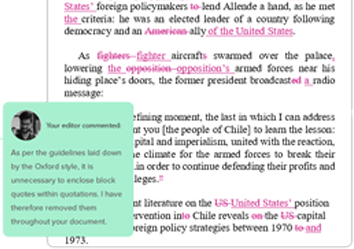
Examples: Edited Papers
Enter your email id to get the downloadable right in your inbox!
[contact-form-7 id="12426" title="Examples: Edited Papers"]Need
Editing and
Proofreading Services?

Parts of a Book: A Practical, Easy-to-Understand Guide
 May 07, 2025
May 07, 2025 5
min read
5
min read
- Tags: Book Writing, Fiction Writing, Novel
When you pick up a book, you might start reading the story right away. However, the main story is just one part of the book. The other parts, found at the beginning and end, help make the book complete.
In this blog, you’ll learn about all the different parts of books with simple examples. You’ll also understand how to organize these parts to create a book structure. So let’s explore the different parts of a book!
Your Book. Our Expertise. Let’s Publish It. Get Started
What are the different parts of a book?
Every book has 3 basic parts: the front matter, body text, and back matter. Each part is equally important to complete the book. Here’s a quick overview of these parts:
1. The Front Matter: The book’s friendly hello!
Author’s Name, Title, Copyright Page, Preface, Foreword, Dedication, Positive Reviews, Illustrations, Acknowledgements, Epigraph, List of Tables, Figures & Abbreviations
2. The Main Body: The book’s beating heart!
Prologue, Chapters, Paragraphs, Dialogues, Illustrations, Photos, Sections/Parts, Epilogue, Conclusion, Headings, Subheadings, Footnotes/Endnotes, Page Numbers
3. The Back Matter: The book’s grand finale!
Author’s Bio, Author’s Note, Acknowledgements, Copyright Permissions, Glossary, Bibliography/Reference List, Index, Appendix, Afterword, Discussion Questions, Reader’s Guide, Book Excerpt, Other Books by the Author
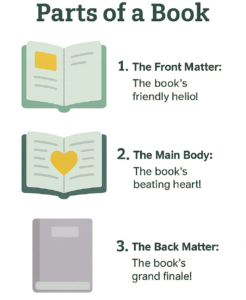
However, this is just the tip of the iceberg. To understand the parts of a book in detail, let’s dive deeper.
What is included in the front matter of a book?
The front matter is like the beginning of a movie, setting the stage for what’s to come. Its important elements are:
1. Half title page (optional): This is the very first page of the book, and it only has the book’s title on it.
The Mountain God’s Revenge
2. Frontispiece (optional): This is a picture or illustration that comes right after the half-title page. It gives you a sneak peek into the story or the book’s theme.
The Magical Mountain Castle
3. Title page (compulsory): This page has the book’s full title, the author’s name, and the publisher’s name. It’s like a formal introduction to the book.
A CIRCUS OF WARRIORS
R.K. LIM.
Ferns Publishing House
4. Epigraph (optional): An epigraph is a short quotation or saying. It is usually from a famous person or literary work that is relevant to the book’s theme, content, or tone.
The epigraph is typically placed on a separate page between the half-title page and the main text, or between the dedication and the table of contents. In some cases, it may appear directly below the dedication on the same page.
Two roads diverged in a wood, and I—
I took the one less traveled by,
And that has made all the difference.
– Robert Frost, “The Road Not Taken”
5. Copyright page (compulsory): This is super important! It’s the legal stuff – who owns the book when it was published, the ISBN (a 13-digit book identifier), and other publishing details. To know more, you can read the article “How to Copyright a Book in 2024”.
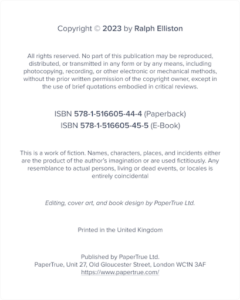
6. Dedication (optional): This is where the author writes a short message to someone special, like a friend, family member, or someone who inspired them. You can take inspiration from book dedication examples online to write a book dedication.
To my incredible partner, Alex, who has been my rock throughout this journey. Your constant encouragement, patience, and belief in me have been the driving force behind this book.
7. Accolades (optional): These are positive book reviews from reputable sources like magazines, agencies, and famous people. They are often placed right after the half-title page or before the copyright page to attract readers.
“A mesmerizing tale that captivates readers from the very first page.”
– New York Times
“Johnson’s sophomore novel is a beautifully crafted story that will leave you spellbound.”
– Samantha Lee, USA Today
“The book is a powerful reminder of the importance of following our dreams. Sarah Johnson has woven a magical tapestry of words.”
– BookBuzz Magazine
“In ‘The Enchanted Garden,’ Johnson has created a lush and vibrant world filled with wonder and adventure. A must-read for fans of the genre.”
– Emily Davis, The Literary Review
“A spellbinding tale of magic, friendship, and self-discovery. Sarah Johnson’s writing is as enchanting as the garden itself.”
– Michael Thompson, author of “The Lost Tower”
8. Foreword (optional): This is a message from someone other than the author, usually a famous person or an expert, who talks about why the book is important or special. It’s like a friendly recommendation.
Foreward
In today’s fast-paced and ever-changing world, it’s easy to lose sight of what truly matters. We often find ourselves stressed and worried about the future. It is in these moments that we must pause, take a deep breath, and reconnect with the present moment.
“The Art of Meditation” by Dr. Elizabeth Thompson is a powerful guide that teaches us how to practice meditation in our daily lives. As a meditation practitioner for 25 years, Dr. Thompson has dedicated her career to helping individuals find peace and clarity.
What sets this book apart is Dr. Thompson’s ability to combine ancient meditation practices with modern research. She seamlessly weaves together scientific research, personal anecdotes, and philosophical insights to create an engaging narrative.
J.F. Winters
9. Preface (optional): This is where the author talks about why they wrote the book, what inspired them, or how the book came to be. It’s like a behind-the-scenes story.
PREFACE
When I first set out to write this book, “Exploring the Wonders of the Universe,” I had one goal in mind: to share my passion for astronomy.. As an astronomer, I have spent countless hours gazing at the stars, studying distant galaxies, and marveling at the mysteries of the cosmos. I wanted to capture that sense of wonder and convey it to readers who may not have had the same opportunities to explore the universe as I have.
In this book, I take readers on a journey through the various aspects of astronomy, from the basics of stargazing to the latest discoveries in astrophysics. I have tried to make the content accessible to readers of all levels, whether they are complete beginners or have some prior knowledge of the subject.
My hope is that by reading this book, you will be inspired to continue learning and exploring on your own. The study of astronomy is a never-ending journey, and there is always something exciting to discover. So, let us embark on this cosmic adventure together and unravel the wonders of the universe, one page at a time.
Dr. Emily Roberts
Department of Astronomy
University of Starlight
10. Acknowledgments (optional): Here, the author thanks all the people who helped them create the book, like their editor, family, or friends. It’s like a big thank-you note.
ACKNOWLEDGEMENTS
Writing this book, “The Path to Inner Peace,” has been a transformative journey, and I am deeply grateful to the many people who have supported me along the way.
First and foremost, I would like to express my heartfelt gratitude to my family. To my loving husband, John, thank you for being my constant source of encouragement.
To my children, Sophie and Alex, thank you for your patience and understanding during the long hours I spent writing. Your love and laughter have kept me grounded and filled my heart with joy.
I would also like to extend my sincere thanks to my mentor and friend, Dr. Sarah Thompson. Your wisdom, guidance, and invaluable feedback have been instrumental in shaping this book.
To my editor, Rachel Johnson, thank you for your tireless dedication and meticulous attention to detail. Your insightful suggestions have helped me refine my writing and bring clarity to my ideas.
I am also grateful to my agent, Michael Davis, for believing in this project from the very beginning and for working tirelessly to bring this book to life. Your expertise and guidance have been invaluable throughout this process.
11. Table of contents (optional): This is a helpful list showing all the chapters and sections of the book, along with their page numbers. It’s like a map to help you navigate the story.
Table of Contents
Chapter 1: Introduction to Climate Change …………………….. 1
Chapter 2: Evidence of Climate Change ……………………….. 15
Chapter 3: Impacts of Climate Change ………………………… 43
Chapter 4: Mitigation Strategies ……………………………. 71
Chapter 5: Adaptation Measures ……………………………… 99
12. List of Abbreviations (optional): A list of abbreviations and their full forms is included in nonfiction books that have many abbreviations. This list is added after the “Table of Contents” in books.
List of Abbreviations
AI – Artificial Intelligence
AR – Augmented Reality
B2B – Business-to-Business
B2C – Business-to-Consumer
CEO – Chief Executive Officer
CMS – Content Management System
CRM – Customer Relationship Management
CSS – Cascading Style Sheets
API – Application Programming Interface
DB – Database
DNS – Domain Name System
ERP – Enterprise Resource Planning
FTP – File Transfer Protocol
GUI – Graphical User Interface
HTML – Hypertext Markup Language
HTTP – Hypertext Transfer Protocol
HTTPS – Hypertext Transfer Protocol Secure
13. List of figures or tables (optional): If the book has a lot of pictures, drawings, or tables, this list tells you where to find them.
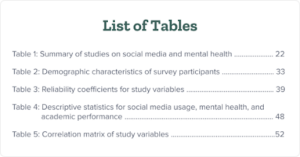
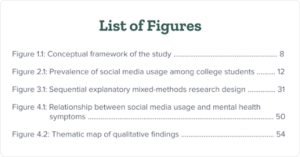
What is included in the body matter of a book?
The main body is the largest part of a book that contains important information. Its different parts are:
Parts of a Book’s Main Body
| Chapters | Paragraphs | Photos |
|---|---|---|
| Prologue | Dialogues | Headings and subheadings |
| Epilogue | Conclusion | Footnotes and endnotes |
| Sections/Parts | Illustrations | Page numbers |
| Chapters | Paragraphs | Photos |
1. Chapters (compulsory): The story is typically divided into chapters, each focusing on a specific part of the narrative. This is also one of the important parts of a novel.
2. Prologue (optional): A prologue sets the scene or introduces background information before the main story begins.
3. Sections/Parts (compulsory): Larger works of fiction might be divided into sections or parts while writing a book. They often group related chapters together.
4. Paragraphs (compulsory): Within each chapter, the content is further divided into paragraphs. Paragraphs are groups of sentences that all relate to the same idea or topic. They help break up the text and make it easier to read.
5. Dialogue (optional): In fiction books (like novels), you’ll often find dialogues, which is when characters in the story talk to each other. Dialogue is usually enclosed in quotation marks to set it apart from the rest of the text.
6. Conclusion (optional): A conclusion wraps up the main story by summarizing key points or resolving conflicts.
7. Illustrations and photos (optional): Some books, especially children’s books or non-fiction books, might include illustrations, pictures, or diagrams in the main body. These visuals help explain or enhance the written content.
8. Headings and subheadings (optional): Headings and subheadings are used to organize the content within chapters. These are like mini-titles that help guide the reader and break up the text into smaller, more manageable sections.
9. Footnotes or endnotes (optional): Some books, particularly academic or scholarly works, use footnotes or endnotes in the main body. These are small numbers that refer to additional information or references located at the bottom of the page (footnotes) or at the end of the chapter or book (endnotes).
10. Page numbers (compulsory): Each page in the main body of the book is numbered. This helps readers keep track of their progress and makes it easy to refer back to specific parts of the book.
What is included in the back matter of books?
The back matter offers additional context, resources, or details that enhance the reading experience. Let’s explore the different elements included in the back matter!
Important Elements of the Back Matter in Books
| Author’s biography | Appendix |
|---|---|
| Author’s biography | Appendix |
| Author’s note | Glossary |
| Acknowledgements | Bibliography |
| Copyright permissions | Index |
| Epilogue | Afterword |
1. Author’s biography (optional): The author bio is a short description of the author’s life, their other books, or their achievements. It helps you get to know the person behind the book.
2. Author’s note: (optional) An author’s note is distinct from an afterword or postscript. It’s a brief statement, usually just a paragraph, where the author adds a personal note, perhaps about the inspiration behind the book or a dedication. This appears at the very end, after the acknowledgments and bio.
3. Acknowledgments: Here, the author thanks all the people who helped them create the book, like their editor, family, or friends. It’s like a big thank-you note.
A good practice is to research acknowledgment examples for books in your genre to get a better idea of how to write this section.
4. Copyright Permissions (compulsory): If the book uses quotes, images, or content from other sources, this section gives credit to the original creators and thanks them for allowing their work to be used.
5. Appendix or Addendum (optional): Non-fiction books, especially textbooks or research-based books, often include an appendix with supplementary material.
6. Glossary (optional): If a book uses many technical, unusual, or foreign words, a glossary is often included to help readers understand these terms. A glossary in books is often arranged in alphabetical order and contains concise explanations of these terms.
7. Bibliography or reference list (compulsory): Non-fiction books, particularly academic or scholarly works, typically include a bibliography to cite the sources used in the book. References in books usually follow a style guide such as APA, MLA, Chicago, etc.
8. Index (optional): Many non-fiction books, such as textbooks, reference books, or historical works, include an index to help readers quickly locate specific topics or keywords.
9. Epilogue (optional): An epilogue is related to the future, showing what happens after the main story ends or offering reflections. This is more common in fiction books, particularly novels, but not all novels have an epilogue.
10. Afterword (optional): The purpose of an afterword is to provide additional context, reflections, or insights related to the book’s themes, creation process, or reception.
11. Discussion questions (optional): These are sometimes included in literary fiction or non-fiction books to encourage reader engagement or for use in book clubs or classrooms.
12. Reader’s guide or book club resources (optional): Similar to discussion questions, these resources are occasionally included to enhance the reading experience, but they’re not a standard element.
13. Sneak peek or excerpt (optional): A sneak peek or excerpt is usually a chapter from a new book. This is a promotional tool sometimes used to entice readers to purchase the author’s next book, but it’s not included in all books.
14. Other books by the author: (optional): Similar to the “Also By the Author” page, this section includes a list of all published books by the same author.
Understanding these book components is crucial to creating a well-crafted book structure. If you’re a writer looking to refine your book’s structure, consider seeking professional editing and formatting services to ensure your work is polished.
This is where PaperTrue can help. We provide professional editing and proofreading services to refine your text. Plus, our trained team can also format your text as per your requirements.
To know more about our services and pricing, explore our website!
Here are some other useful resources for you:
Frequently Asked Questions





